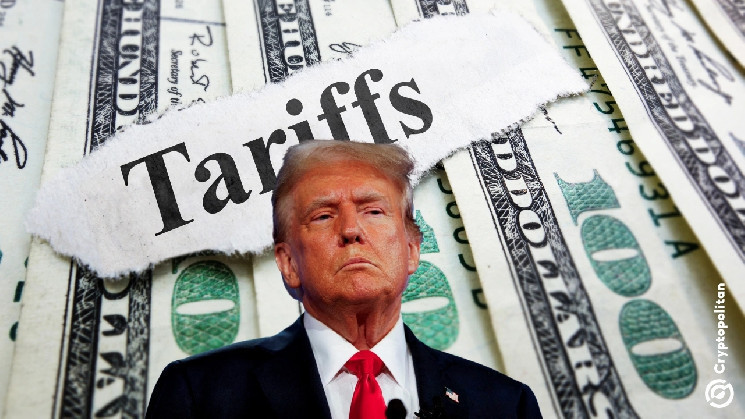The Federal Reserve and the Crossroads of Economic Policy
The Federal Reserve finds itself at a critical juncture as it grapples with the potential consequences of President Donald Trump’s tariffs on the U.S. economy. The central bank held interest rates steady in January, but the release of the Federal Open Market Committee (FOMC) meeting minutes has revealed growing concerns about the impact of Trump’s trade policies, particularly his proposed tariffs on vehicles, pharmaceuticals, and semiconductors. These tariffs, if implemented, could drive inflation higher, potentially pushing the Fed to reconsider its interest rate strategy. Some officials warn that businesses may pass on the increased costs of tariffs to consumers, leading to higher prices and complicating the Fed’s efforts to meet its 2% inflation target. This has left policymakers balancing the need to keep rates steady or even cutting them if economic conditions deteriorate further. The situation highlights the delicate interplay between trade policy, monetary policy, and economic stability.
The Ripple Effects of Trade Policy
The FOMC minutes paint a clear picture of the risks associated with Trump’s tariff plans. Officials expressed concern that the tariffs could disrupt supply chains and lead to higher production costs for businesses, which in turn could result in increased prices for consumers. This scenario could force the Fed to keep interest rates elevated for longer than anticipated, as it works to combat inflation. However, if the economy falters under the strain of these tariffs, the Fed might be compelled to cut rates to stimulate growth. The minutes emphasized that the central bank is closely monitoring the situation and will adjust its policy stance as needed. The potential for trade-driven inflation has already caused some unease among businesses across various Federal Reserve districts, with many reporting heightened anxiety about rising input costs and their impact on consumer goods.
The Complicated Dance of Trade and Monetary Policy
President Trump’s aggressive trade strategy has introduced a new layer of complexity for the Federal Reserve. His latest proposal to impose a 25% tariff on critical imports such as cars, pharmaceuticals, and semiconductors could have far-reaching consequences for the U.S. economy. These sectors are not only vital to economic growth but also deeply integrated into global supply chains. Disruptions in these areas could lead to price increases that reverberate across industries. Trump’s rationale for the tariffs, as he explained to reporters, is to protect American jobs, but the potential fallout for consumers and businesses remains a significant concern. The Fed is now tasked with navigating this uncertain landscape, balancing the need to control inflation with the risk of economic downturns. The situation underscores the interconnected nature of trade and monetary policy, as well as the challenges of forecasting economic outcomes in an era of escalating protectionism.
The Economy’s Mixed Signals
Despite the concerns over tariffs, the U.S. economy has shown considerable resilience. Strong corporate earnings reports have bolstered market confidence, with many companies choosing to focus on future opportunities rather than trade-related risks. For instance, Goldman Sachs’ chief economist, Jan Hatzius, noted that consumer spending remains robust, with real revenues excluding energy companies growing by 3.2% year over year in the fourth quarter of 2024. Businesses are also benefiting from Trump’s deregulation efforts, which have fostered optimism and increased investment in capital expenditures. However, Hatzius also observed that the current economic optimism may be driven more by “animal spirits” than a careful assessment of the risks posed by tariffs. This divergence between strong economic fundamentals and the potential disruptions caused by trade policies creates a complex environment for the Fed to operate in.
Manufacturing’s Surprising Strength
One of the brightest spots in the current economic landscape is the manufacturing sector. The Institute for Supply Management’s (ISM) purchasing managers’ index for manufacturing reached its highest level in two years, signaling renewed strength in the sector. This improvement is attributed to increased spending on new technologies, such as artificial intelligence, as well as tax incentives and other supportive policies. Hatzius predicts that business investment will grow by about 5% in 2025, driven by these positive developments. However, the sustainability of this growth remains uncertain, as it could be derailed by the very trade policies that are currently causing concern. The Fed will undoubtedly be keeping a close eye on these developments as it considers its next moves.
The Federal Reserve’s Evolving Strategy
As the economic landscape continues to shift, the Federal Reserve has made it clear that it will remain flexible in its approach to monetary policy. The FOMC minutes emphasized the central bank’s commitment to adjusting its stance as needed, taking into account a wide range of factors, including labor market conditions, inflation pressures, and international developments. This cautious yet adaptable approach reflects the Fed’s recognition of the uncertainty surrounding trade policy and its potential impact on the economy. While the central bank has maintained its current target range for the federal funds rate, it has left the door open for future adjustments, ensuring that it is prepared to respond to any emerging risks. As the situation unfolds, the Fed’s ability to balance competing economic forces will be crucial in determining the path forward for the U.S. economy.















